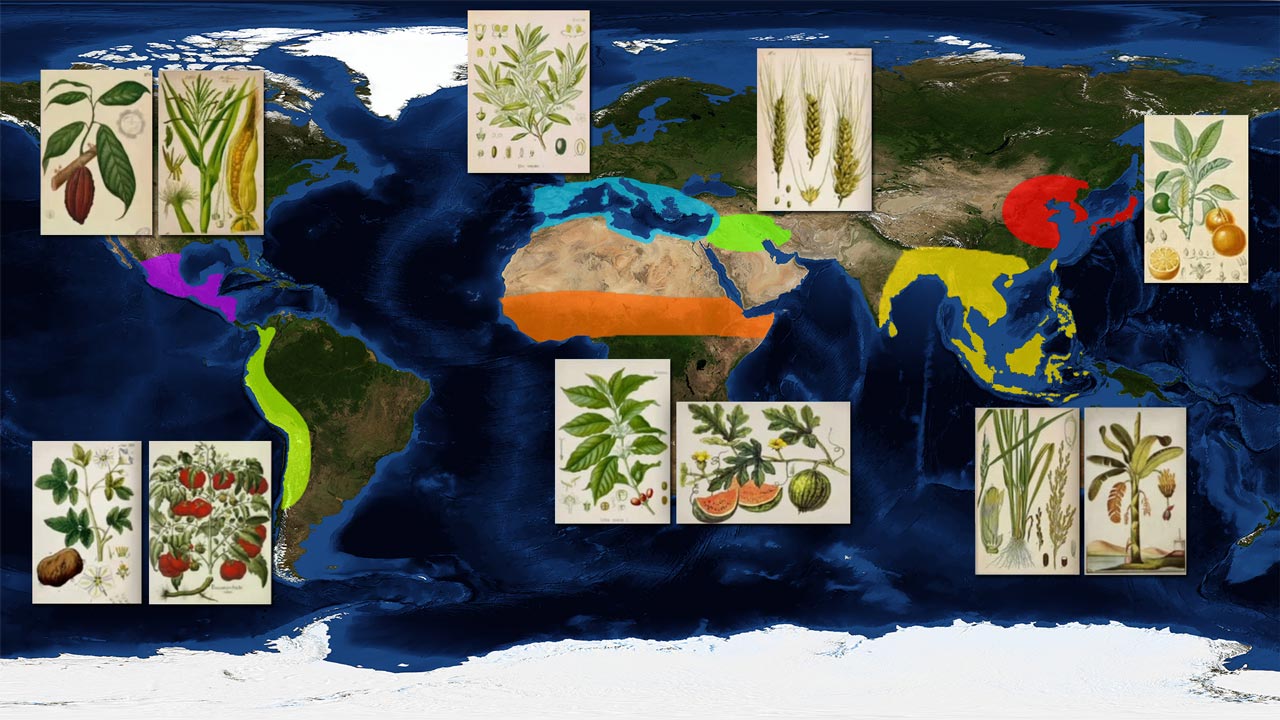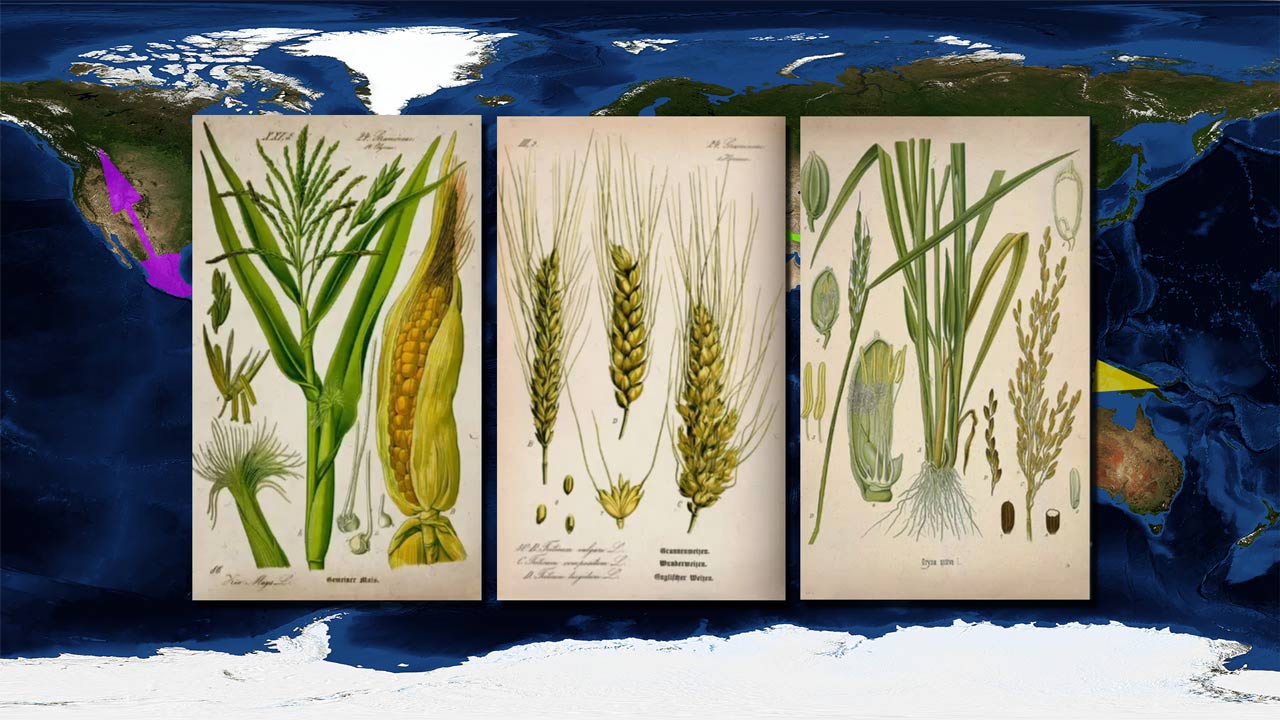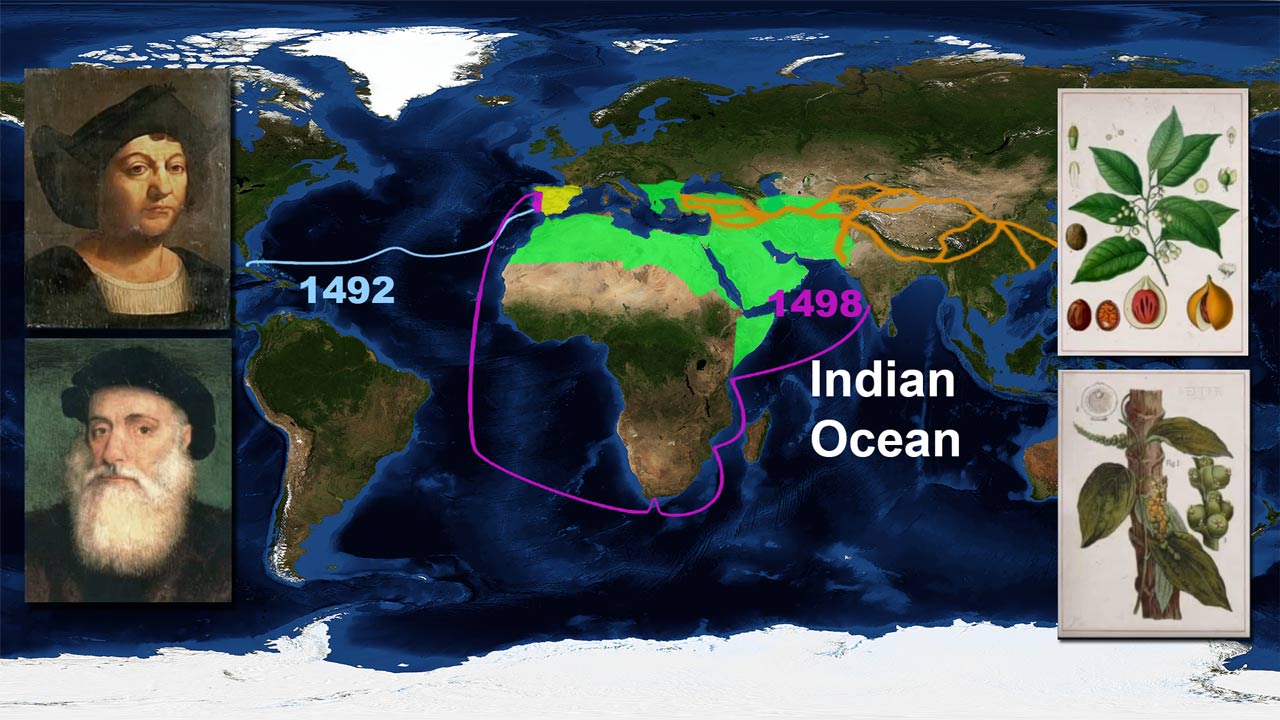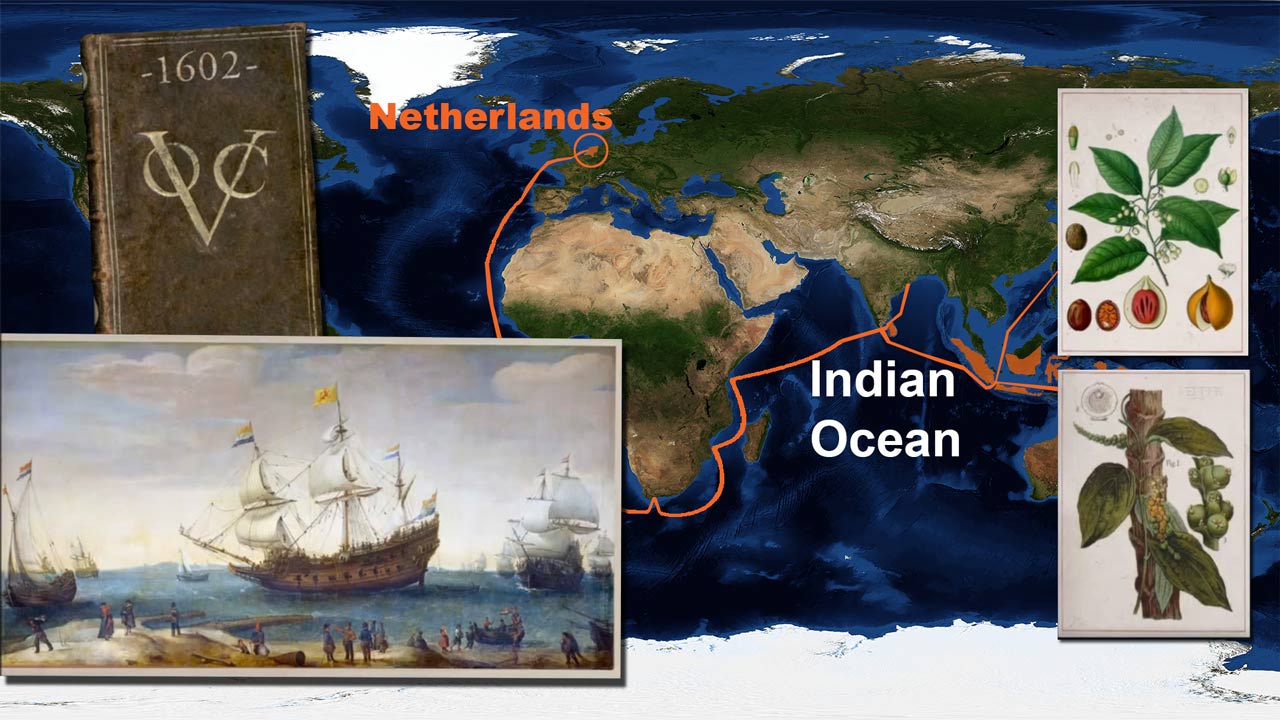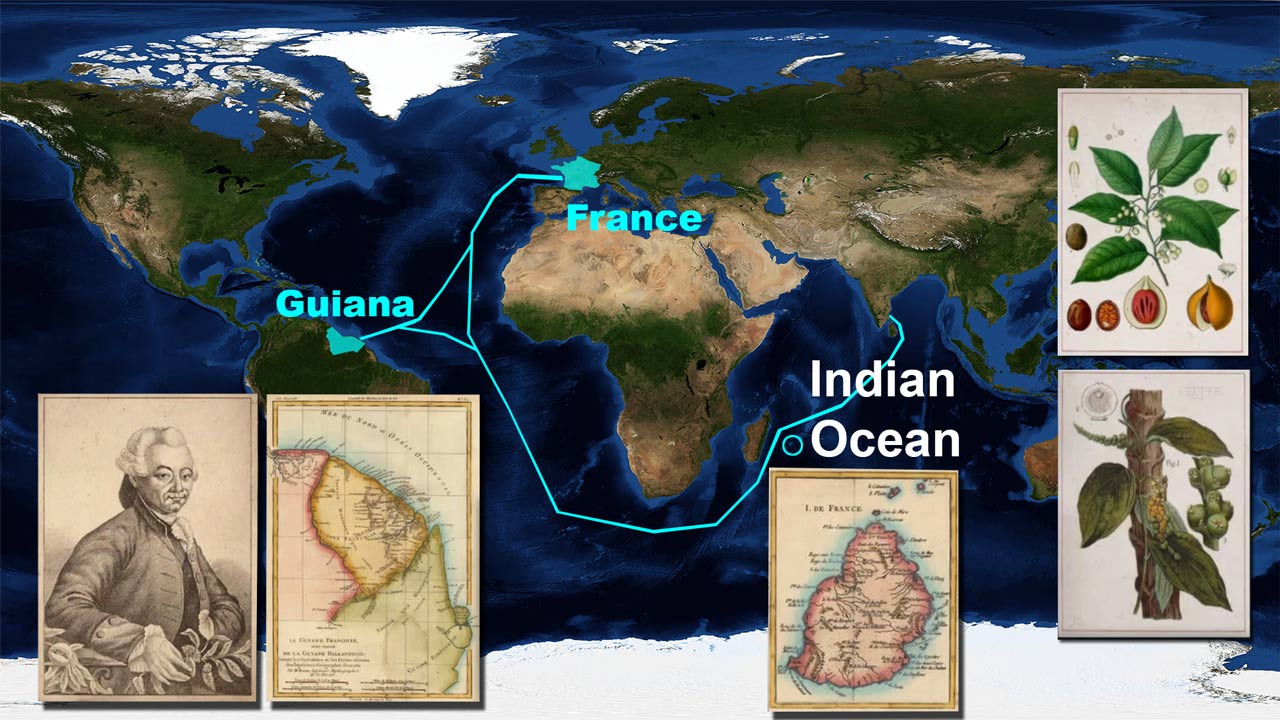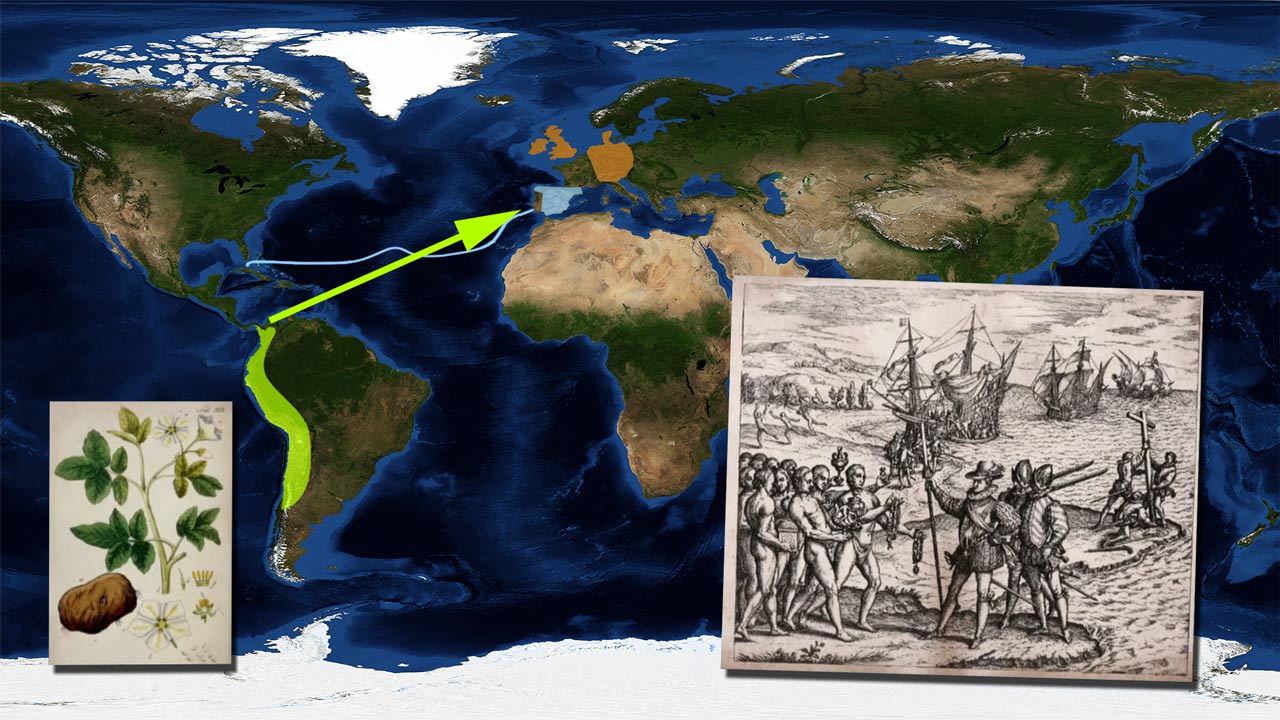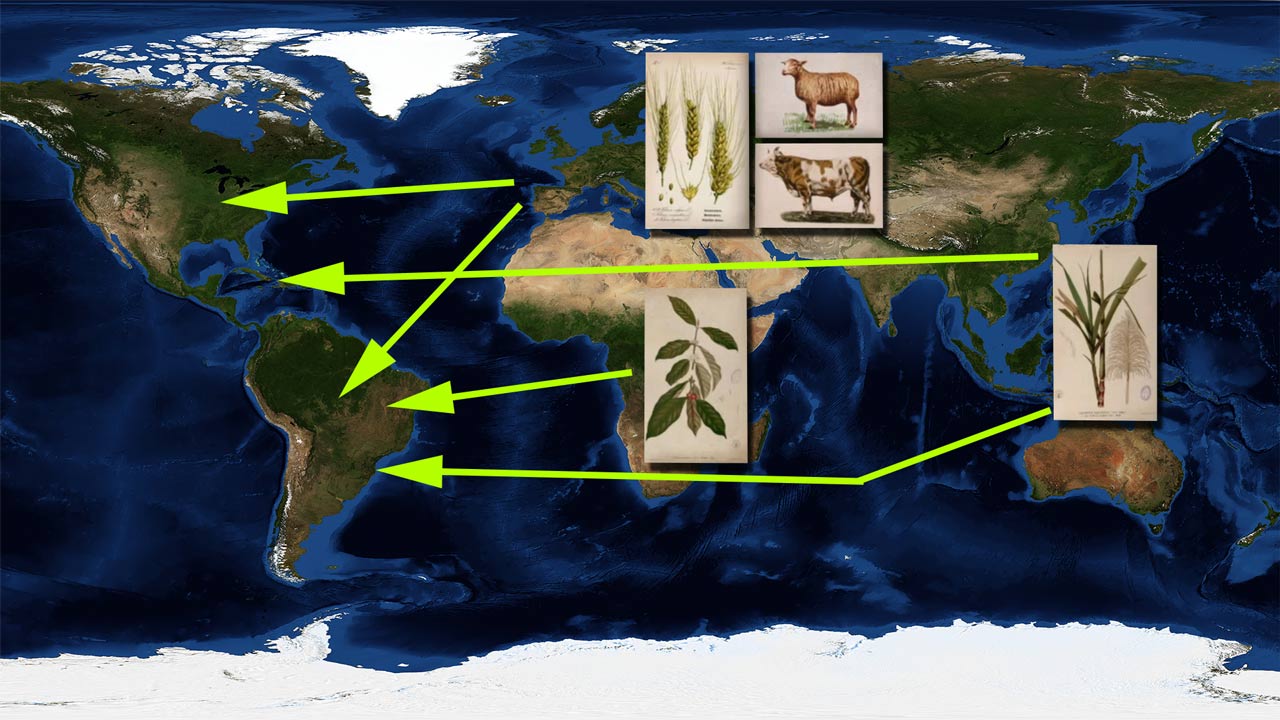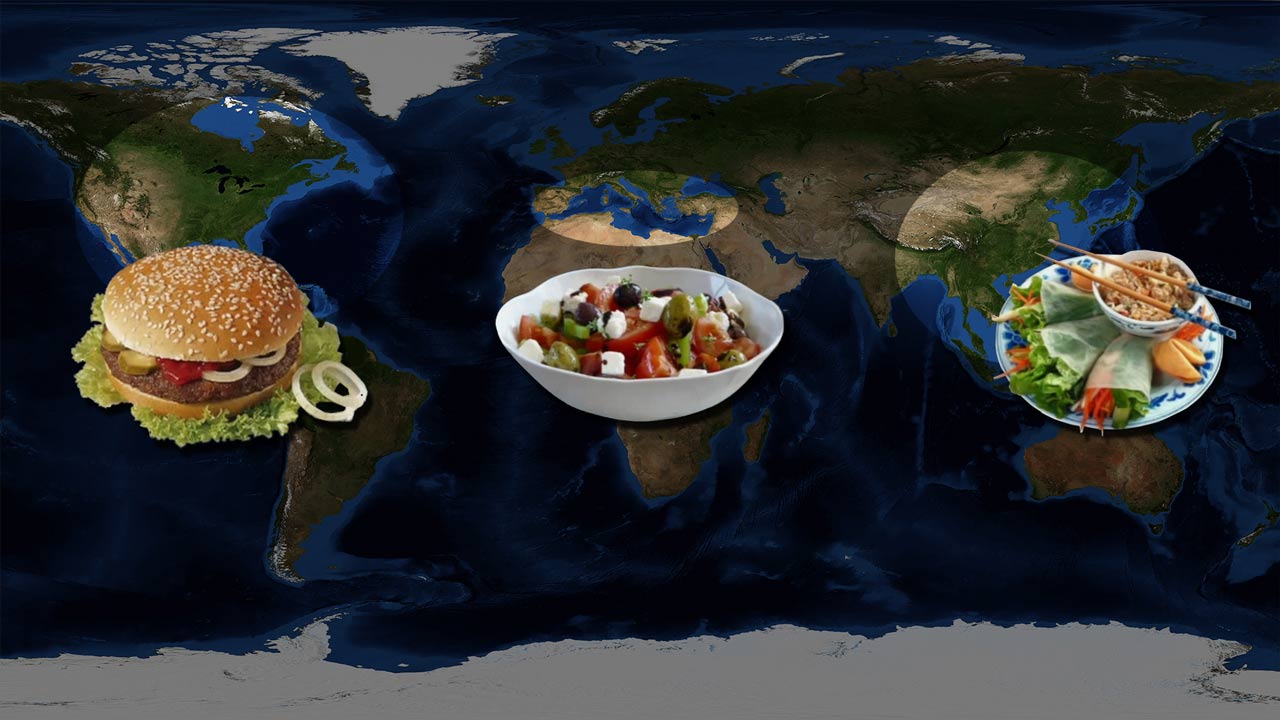Origin of Food Plants
- From Middle America came corn and cacao.
- From the Andes came potatoes and tomatoes.
- From the Orient came wheat and barley.
- From south eastern Asia came rice and bananas.
- From north China came oranges.
- From Africa came coffee and watermelons
- And olives came from the Mediterranean area.
The Three Main Cultivation Methods
That areas developed different cultivation methods and food cultures.
The cultivation of wheat and barley started in the new stone age around 9000 BC. Firstly in the Orient, and then in Europe, Asia and Africa.
The cultivation of rice started in south eastern Asia and spread in whole Asia then.
And the cultivation of corn spread from Middle America to North, and South America.
So arose three different cultivation methods which are known as “wheat culture“, “rice culture” and “corn culture“.
Discovery of the World
But that division changed after the European started to explore the remaining world.
At the end of the 15th century were the European countries Spain and Portugal looking for a direct way to the Asian spices nutmeg and pepper.
Because during that time most of the known trade routes, were controlled by Muslim countries and they demanded high tolls. To avoid those areas and tolls, tried Portugal and spain to reach Asia by sea.
Columbus tried to explore a way by sailing west. He didn’t reach India but explored America in 1492.
The Portuguese Vasco da Gama sailed eastwards and reached India in 1498.
An Aribic trader asked him what he’s looking for, and Vasco answered: Christians and spices.
There weren’t Christians, but Vasco supplied Portugal a direct access to the precious spices for the next 100 years.
The Aribic trade domination was broken and from that point controlled Portugal the very lucrative spice trade.
A new Player: The Dutch East India Company
At the beginning of the 17th century managed the Netherlands to displace Portugal in trade domination.
They founded the Dutch East India Company in 1602 and became the greatest trading power in the world, mainly because of the spice trade.
To fortify their monopoly, started the Netherlands their own pepper plantations in Dutch East Indies, which is Indonesia today, and destroyed all other pepper plantations to determine the price of pepper.
Great Britain’S Role
In the 18th century was the Dutch monopoly broken by the increasing influence of Great Britain.
And France started their own trade routes too.
The French botanist Pierre Poivre managed to plant pepper on Mauritius and in other parts of the French colonial empire, like in French Guiana in South America.
So started a global spread of spices. And because of their increasing number of producing areas, decreased their economic importance.
The Change of Eating Habits
Let’s have a look at America, where after the arrival of the Europeans the eating habits changed. So became some of new world foods very fast European staple food.
To them belongs, for instance, the tomato, which came from the Andes and was known by the Incas already. The tomato reached Middle America from there to the Aztecs. The Spanish brought them to Europe in the 16th century. In the 18th century spreaded the cultivation of the tomato in the Mediterranean area. And European emigrants brought them to North America.
Another example is the potato, which came from the Andes and was brought just like the tomato from the Spanish to Europe in 1550. The potato became very fast famous in North Europe.
Other formerly unknown plants in Europe were: beans, corn, and cacao. Cacao stayed an import food because it didn’t get along with the European climate.
The Modern Food Cultivation
In that way started a mixture, a beginning globalization of eating habits, which was increased by the industrial revolution. Because of that in Europe starting development appeared the first machines and with them the first agricultural machinery. Areas under cultivation increased and so did their crops.
Because of population growth and urbanization in the 19th century increased the market for food and thereby the agricultural production. Products were processed and stored near large cities.
That was the beginning of the modern food industry.
Besides the industrial revolution came new methods for preservation of food: the Dry heat sterilization developed in the middle of the 19th century and led to the appearance of the canning industry. In the years after 1870 was the refrigeration invented also. Additional to that inventions start the transport network to develop.
The French engineer Charles Tellier installed a reefer on the steamship Le Frigorifique. His ship sailed from France to Argentina to prove that meat can be transported across the Atlantic undamaged. Le Frigorifique returned to France with more than 25 thousand tons of beef.
By new transportation means, especially air cargo, accelerated this globalization in the 20th century and new, large places of production arose.
In the United States, for instance, occured specialized production areas, so called belt regions:
- In the north east the dairy belt, which produces milk.
- In the north and the Midwest the wheat belt.
- In the east the corn, soy belt.
- In the east also grow different crops in wide areas.
- In the south, the sun belt, grow citrus fruits and vegetables.
- And in the west are large pasture areas to produce beef.
Today’s Three Main Food Patterns
Today exists three main food patterns which are:
- The Mediterranean cuisine, which is based on alot of fruits, vegetables, and olive oil.
- The Chinese food, which is widespread, because of the many chinese workers around the world, especially in big cities.
- And the North American food, which established first in the industrialized countries and then in the emerging markets.
